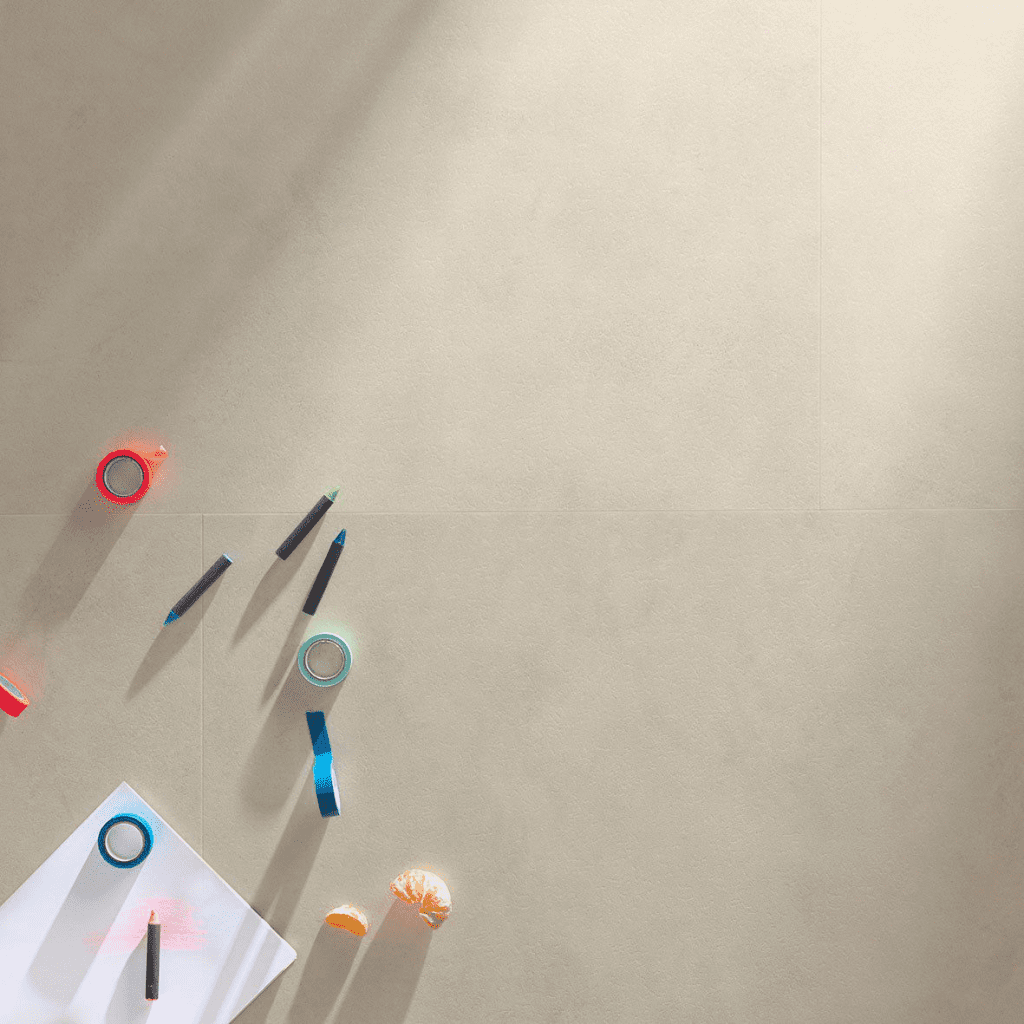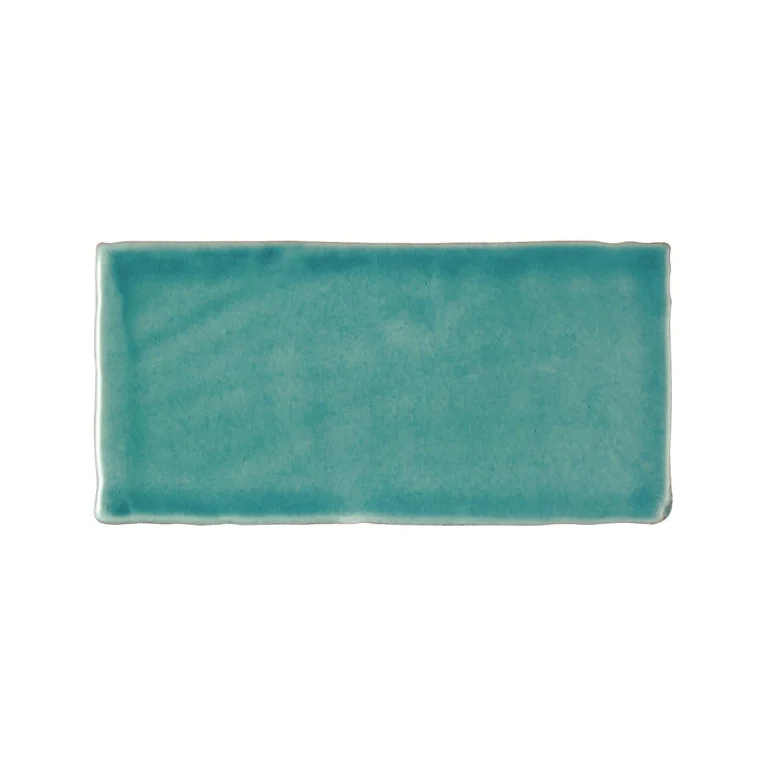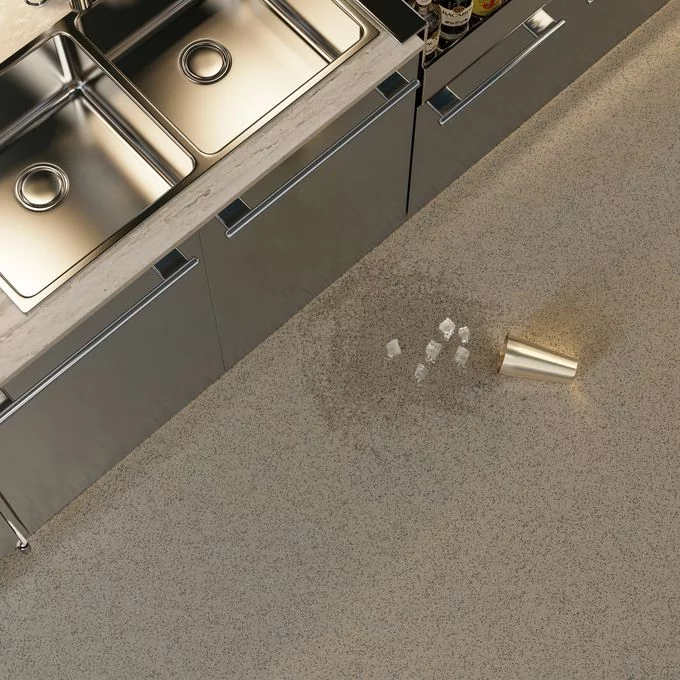Choosing the best flooring for children involves more than just aesthetics; it’s about creating a safe, comfortable, and durable environment for play and learning in various rooms like the nursery or playroom.
Essential factors include safety, durability, comfort, and maintenance. Various flooring options, from carpet to vinyl, will be compared to highlight their unique features. Considerations like underlay and insulation can enhance these factors.
Tips for maintaining and upgrading your child’s flooring will also be shared. Discover how to make the best choice for your family’s needs, with insights from experts.
Factors to Consider when Choosing the Best Flooring for Children
What is the best flooring for children? When selecting the best flooring for children, several critical factors must be taken into account to ensure the safety, comfort, and durability required for a family-friendly environment.
From the active lives of toddlers and babies to the high traffic generated by older children, flooring options need to not only withstand wear and tear but also provide a pleasant aesthetic and easy maintenance for parents.
Additionally, the choice of materials can affect acoustics and comfort, making it essential to consider various flooring types such as carpet, wood, vinyl, and tiles to create a functional and inviting home for your family.
1. Safety
Safety is a paramount concern when choosing flooring for children, as young ones are prone to falls and accidents in the home environment.
Parents want to ensure that every corner of their home is a safe haven, especially in spaces where little ones play and explore. When considering flooring options, it is essential to evaluate different safety features, including slip resistance and effective impact absorption.
- Slip Resistant Flooring: Materials such as rubber and textured vinyl provide a solid grip, significantly reducing the risk of slips.
- Impact Absorption: Foam tiles and cork flooring absorb shock, cushioning falls and minimising injuries.
- Soft Surfaces: Carpeting provides a cosy, safe area for children, preventing hard impacts during tumbles.
Eco-friendly options such as bamboo and natural cork are not only safe but also promote a healthier environment for children, addressing parental concerns about toxins in their homes.
2. Durability
Durability is essential for flooring in homes with children, as high-traffic areas can quickly wear down weaker materials, leading to increased maintenance costs and potential safety hazards for little ones at play.
When selecting flooring options, it is important to consider how different materials will hold up under the demands of an active household. Hardwood, for instance, offers timeless beauty but may require regular refinishing to keep it looking its best. In contrast, laminate flooring is a cost-effective alternative that mimics the appearance of wood but provides enhanced scratch resistance. Vinyl is another winner, with a waterproof quality that makes it ideal for spills and messes, ensuring a longer lifespan.
To maintain these floors, routine cleaning with appropriate products is crucial. Opt for dirt-resistant options and ensure periodic deep cleans to keep your surfaces fresh.
When choosing a durable product, look for warranties and reviews that highlight long-lasting performance.
3. Comfort
Comfort in flooring is crucial, especially for children who spend a lot of time playing on the floor in areas like nurseries and playrooms. Softness and cushioning are vital characteristics that not only enhance joy during playtime but also significantly reduce the risk of injuries from falls, which are common in energetic youngsters.
When selecting flooring materials, options such as carpets and foam tiles stand out for their ability to provide a soft landing surface. These materials offer numerous advantages:
- Enhanced Safety: The softness of these surfaces can help absorb impact, decreasing the likelihood of scrapes and bruises.
- Improved Comfort: A cushioned floor allows children to sit, crawl, or play for extended periods without discomfort.
- Noise Reduction: Both carpets and foam tiles muffle sounds, creating a peaceful environment that is beneficial for concentration and overall well-being.
Ultimately, prioritising a comfortable play surface not only elevates the play experience but also contributes positively to a child’s overall health and happiness, enhancing the quality of life at home.
4. Maintenance
Maintenance is a vital aspect of flooring for families with children, as easy-clean options can save parents time and effort.
When selecting flooring for a busy household, it is crucial to consider how different materials respond to daily wear and tear. For instance, vinyl and laminate are renowned for their low maintenance requirements and durability. These materials often resist stains and scratches, making them ideal for homes with young children. Consider using products from trusted brands like Karndean and Quick-Step for reliable performance.
Here are some tips for maintaining a pristine appearance, and ensuring your flooring remains bright and inviting:
- Regular sweeping or vacuuming helps to remove dirt and debris.
- Spills should be cleaned promptly with a damp cloth to prevent staining.
- For deeper cleaning, use a mild detergent specifically designed for easy-to-clean surfaces.
By incorporating these practices, keeping floors looking new becomes manageable, allowing families to enjoy their time without worrying about extensive maintenance.
Types of Flooring Suitable for Children
When considering the best flooring options for children, several types stand out due to their unique benefits, including safety, comfort, and ease of maintenance. From soft carpets perfect for playrooms to durable vinyl and hardwood options, each type of flooring presents different advantages that cater to the active lifestyles of children. These flooring solutions not only provide style but also accommodate the specific needs of families with toddlers and babies.
Factors such as insulation, noise reduction, and affordability further influence these choices, making it essential for parents to weigh each option carefully to suit their family’s needs.
a. Carpet
Carpet is often regarded as one of the best flooring solutions for children due to its inherent softness and comfort underfoot, creating a safe environment where kids can play freely without the risk of accidental injuries from hard surfaces. For environmentally friendly options, explore carpets made from polypropylene or other sustainable materials.
This flooring option provides essential warmth during cold days, making it perfect for playtime in any season. With its cushioning qualities, carpet helps to absorb falls and reduces noise levels, offering a quieter space for family activities.
- Benefits of carpet for children:
- Warmth: Keeps little feet cosy.
- Cushioning: Mitigates impact during play.
- Sound Insulation: Damps noise for a peaceful atmosphere.
Various types of carpets are available, such as plush, Berber, and frieze, each with unique textures and durability. Maintenance tips for keeping carpet fresh include regular vacuuming and prompt stain treatment.
Choosing a carpet with stain-resistant properties can further ease cleaning efforts, ensuring a healthier environment for children.

See product: Abingdon Caress Champagne
b. Hardwood
Hardwood flooring is a classic choice that combines durability with elegance, making it a popular option for families with children.
This type of flooring not only enhances the aesthetics of any room but also provides a sturdy surface that can withstand daily wear and tear. Many appreciate how it can seamlessly adapt to various interior design themes, from traditional to contemporary.
Maintaining hardwood is straightforward: regular sweeping and occasional damp mopping will keep it looking pristine. To ensure safety, consider finishes that offer extra grip and reduce the risk of slips, especially in homes with young children. Choosing finishes that are low in VOCs can create a healthier environment. For added insulation, consider installing an underlay that enhances both acoustics and comfort.
Here’s a simple guide to help you choose the right finish:
- Look for water-based finishes, as they dry quickly and emit fewer fumes.
- Opt for satin or matte finishes that provide a non-slip surface.
- Select finishes specifically designed for high-traffic areas to enhance longevity.
By paying attention to these details, one can achieve a beautiful, lasting floor that meets both style and safety needs.
c. Laminate
Laminate flooring is an affordable and durable option that provides an excellent balance of style and practicality for homes with children.
This versatile flooring choice not only withstands the wear and tear of active families but also offers a variety of designs that mimic the look of natural materials, such as hardwood and stone. Homeowners appreciate this type of flooring for its remarkable resistance to scratches and stains, making it ideal for high-traffic areas. Consider laminate from brands like Quick-Step for affordable and stylish solutions.
Installation is straightforward; many products feature a click-lock mechanism, allowing for a swift DIY project. In comparison, traditional hardwood flooring requires lengthy installation processes and extensive maintenance.
- Easy cleaning: A simple sweep and occasional mopping is all it takes to keep it looking fresh.
- Cost-effective: Laminate typically costs less than hardwood, plus it does not require refinishing.
Therefore, for those searching for an economical and beautiful flooring solution, laminate flooring remains a top contender. With options like Elka and Quick-Step, you can find the perfect fit for any household.

See product: Elka 8mm V-Groove Country Oak
d. Vinyl Flooring
Vinyl flooring stands out for its easy maintenance and water-resistant properties, making it ideal for homes with children, particularly in high-traffic areas like kitchens. With options like Luxury Vinyl Tiles from Karndean and Luvanto, you can find styles to suit any decor.
This remarkable flooring solution not only offers design flexibility that can complement any home decor but also boasts exceptional durability that withstands everyday wear and tear. From rustic wood looks to sleek modern tiles, the variety of styles available is truly impressive.
- Resilience: It can resist scratches and dents, ensuring it remains attractive even in bustling households.
- Cleaning: Regular cleaning requires just a simple broom and a damp mop, making upkeep a breeze.
- Installation: Its straightforward installation process means that it can be laid down quickly, sometimes even as a DIY project.
Ultimately, choosing vinyl flooring not only enhances the aesthetics of a space but also provides peace of mind when it comes to maintenance and longevity.

See product: Floorify Big Tiles Jellyfish
e. Cork
Cork flooring is an environmentally friendly option that offers remarkable comfort and insulation, making it a suitable choice for children’s areas.
Its unique soft texture not only cushions every step but also minimises noise, providing exceptional acoustic properties that are ideal for playrooms and bedrooms. This makes cork a preferred choice for parents seeking comfort and style.
Many homeowners appreciate its eco-friendliness, as cork is harvested from the bark of cork oak trees, allowing for sustainable flooring solutions.
To keep cork flooring looking its best, regular maintenance such as sweeping and occasional damp mopping is recommended.
It also works nicely in kitchens and sitting rooms, enhancing the aesthetic with its natural charm while providing an energetically warm surface underfoot.
Cork flooring is a versatile choice that combines durability with comfort, adapting well to various room types.
Comparison of Different Types of Flooring for Children
Comparing different types of flooring is crucial for parents looking to make informed decisions that balance safety, durability, comfort, and maintenance for their children’s spaces. Each flooring type, from carpet to vinyl, presents distinct advantages and limitations, making it essential to evaluate how they align with family needs and lifestyles.
Factors such as safety features, ease of cleaning, and overall durability should be assessed to determine the best fit for high-traffic areas such as playrooms, nurseries, and kitchens.
1. Safety Features
Safety features are pivotal in determining the best flooring for children, as they greatly reduce the risk of slips and falls in the home environment.
The selection of child-friendly flooring directly impacts parental peace of mind, especially in high-traffic play areas. When evaluating options, consider materials that offer excellent slip resistance, like textured vinyl or rubber flooring, which can provide superior grip, even when wet.
Cushioning, such as with padded carpets or foam tiles, contributes to a softer landing during inevitable tumbles, while also enhancing comfort during playtime interactions. Impact absorption capabilities can significantly alter the overall safety of an area—hard surfaces like tiles or hardwood can increase the likelihood of injury, making softer alternatives a more favourable choice.
- Slip Resistance: Textured vinyl and rubber flooring like those offered by Carpetright
- Cushioning: Padded carpets and foam tiles suitable for nurseries
- Impact Absorption: Softer alternatives compared to tiles or hardwood
2. Durability and Resilience
Durability and resilience are crucial aspects of flooring for children, as they help withstand the wear and tear of daily life in a family home. Choosing the right flooring material can significantly impact not only how well it lasts but also how easy it is to maintain over time.
When evaluating options like hardwood, laminate, tiles, wood flooring, and carpets, it is essential to consider their performance in high-traffic areas commonly navigated by lively kids.
- Hardwood: Natural wood is beautiful and durable, but it can scratch easily. Regular maintenance, including refinishing, may be necessary to keep it looking new.
- Laminate: This synthetic alternative mimics wood and is quite resilient, standing up well to spills and scuffs. Cleaning up is straightforward, requiring only occasional mopping.
- Tiles: Ceramic or porcelain tiles are incredibly durable and resistant to stains and moisture, making them ideal for busy homes. Grout lines may require more maintenance to stay clean.
- Carpets: While softer underfoot, carpets can trap dirt and stains, necessitating regular vacuuming and occasional deep cleaning.
Ultimately, finding the right flooring that can endure both the energetic activities of children and the demands of daily life involves balancing aesthetics with practicality.
3. Comfort and Cushioning
The comfort and cushioning provided by flooring are significant factors, especially in areas where children frequently play and gather.
In these vibrant spaces, the choice of flooring can greatly enhance the overall experience. Softness plays a crucial role, in preventing injuries during falls and ensuring little ones can freely explore without worry. Various materials, such as carpet and foam tiles, create a warm environment that encourages play. The thermal insulation properties of certain flooring options help maintain a comfortable temperature, making it pleasant for children all year round.
- Carpet: Offers a soft surface that cushions impact.
- Rubber Flooring: Known for its durability and safety features.
- Vinyl: Provides easy maintenance and is also soft underfoot.
By prioritising comfort, parents can create a safe haven, fostering creativity and active engagement in play.
4. Maintenance and Cleaning
Maintenance and cleaning requirements play a vital role in choosing flooring for children, as busy parents prefer options that are easy to care for, ensuring their spaces remain both stylish and practical amidst the daily chaos that family life can bring.
When considering flooring, it’s essential to recognise the variety of materials available. Here are some easy-care options:
- Laminate: This durable choice mimics wood or stone and is resistant to scratches and spills, making it ideal for lively households.
- Vinyl: Available in numerous designs, vinyl flooring is water-resistant and easy to clean, providing a low-maintenance solution for dining and play areas alike.
- Tile: Though it requires grout maintenance, tiles are exceptionally durable and can withstand high traffic, offering the added benefit of easy wipe-downs.
By choosing these materials, parents can enjoy a beautiful home without endless upkeep.
Tips for Maintaining and Upgrading Children’s Flooring
Maintaining and upgrading children’s flooring is essential for preserving its appearance and functionality, ensuring a safe and comfortable environment for play and daily activities. Consider repairs when necessary to extend the life of your floors.
Regular cleaning and proper care can extend the life of your flooring, while upgrades can enhance safety and aesthetic appeal as children grow. For parents, understanding how to keep floors looking new and how to select the right products is vital to creating a welcoming home that meets their family’s evolving needs.
Conclusion: Choosing the Best Flooring for Children
Choosing the best flooring for children involves careful consideration of multiple factors, including safety, durability, comfort, and maintenance, ensuring that the chosen materials contribute positively to the family environment. In many cities, diverse options are available to cater to various needs.
By evaluating the various types of flooring available and their respective benefits and drawbacks, parents can make informed decisions that cater to the needs of their children while also enhancing the home’s overall aesthetic. Ultimately, the right flooring can create a safe, comfortable, and inviting space for children to grow and thrive.
This thoughtful process encompasses several key points that parents should keep in mind. Safety should always come first; opting for non-toxic materials can mitigate health risks. Durability is crucial, as children’s play can wear down floors quickly. Comfort matters, ensuring the surfaces are gentle enough for crawling toddlers and active children alike. Maintenance requirements should be easy to manage, allowing families to enjoy their spaces without constant upkeep.
The right flooring solution not only accommodates daily activities but also supports developmental needs, making a positive impact on the overall family environment. Polypropylene materials can offer a durable and safe option for active households.
What are you waiting for? Visit TEKA Flooring in Peterborough now to find the best flooring options for children, and let our team handle the fitting for you with our professional fitting services!
Read also:

































